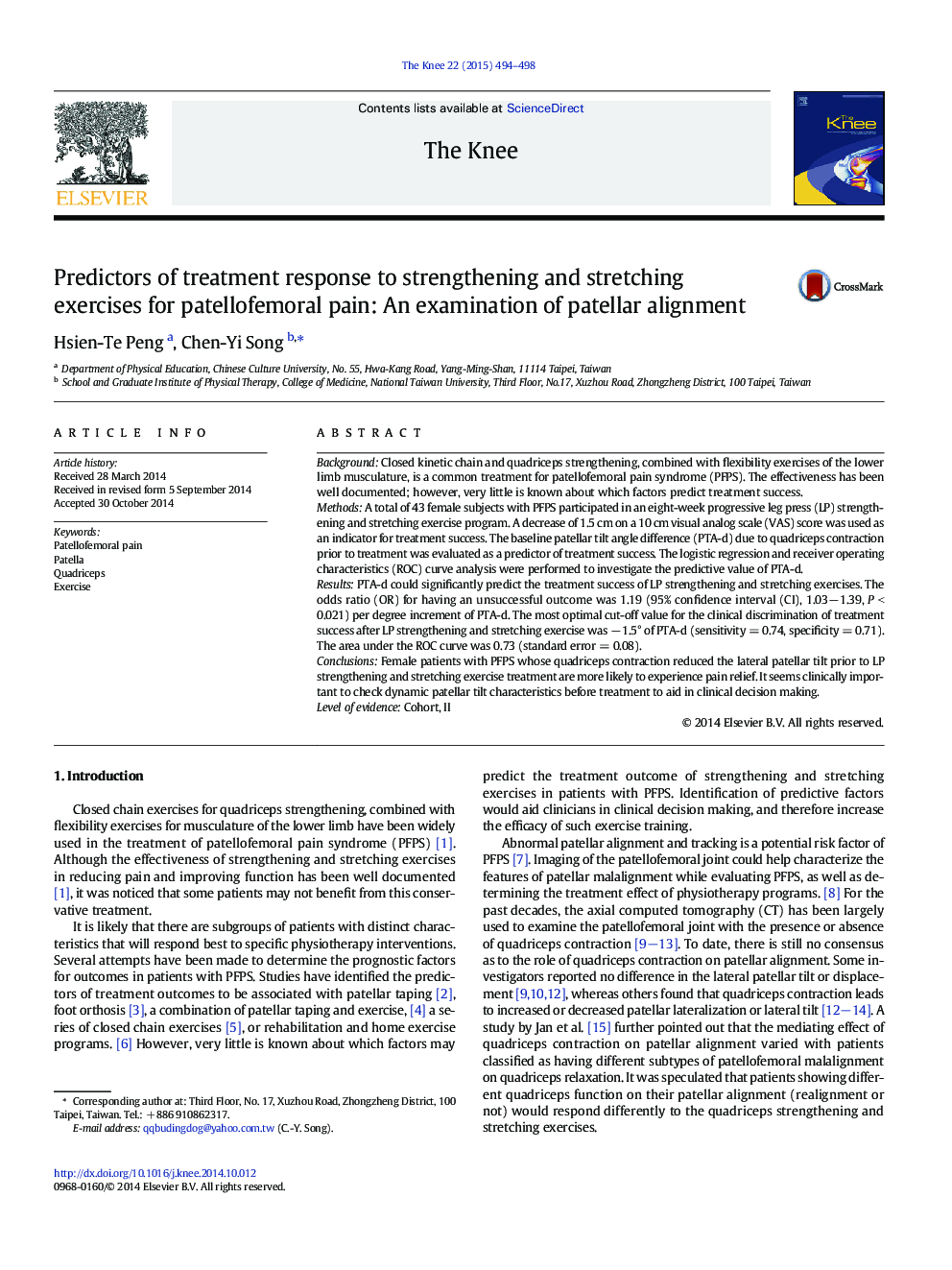| کد مقاله | کد نشریه | سال انتشار | مقاله انگلیسی | نسخه تمام متن |
|---|---|---|---|---|
| 4077352 | 1267214 | 2015 | 5 صفحه PDF | دانلود رایگان |
• Patellar tilt is a predictor of exercise treatment outcome in patients with patellofemoral pain syndrome (PFPS).
• Leg press (LP) and stretching exercise are beneficial for patients whose patella realigns after quadriceps contraction.
• Patient classification based on patellar tilt could aid in clinical decision making and therefore increase the efficacy of exercise intervention.
BackgroundClosed kinetic chain and quadriceps strengthening, combined with flexibility exercises of the lower limb musculature, is a common treatment for patellofemoral pain syndrome (PFPS). The effectiveness has been well documented; however, very little is known about which factors predict treatment success.MethodsA total of 43 female subjects with PFPS participated in an eight-week progressive leg press (LP) strengthening and stretching exercise program. A decrease of 1.5 cm on a 10 cm visual analog scale (VAS) score was used as an indicator for treatment success. The baseline patellar tilt angle difference (PTA-d) due to quadriceps contraction prior to treatment was evaluated as a predictor of treatment success. The logistic regression and receiver operating characteristics (ROC) curve analysis were performed to investigate the predictive value of PTA-d.ResultsPTA-d could significantly predict the treatment success of LP strengthening and stretching exercises. The odds ratio (OR) for having an unsuccessful outcome was 1.19 (95% confidence interval (CI), 1.03−1.39, P < 0.021) per degree increment of PTA-d. The most optimal cut-off value for the clinical discrimination of treatment success after LP strengthening and stretching exercise was − 1.5° of PTA-d (sensitivity = 0.74, specificity = 0.71). The area under the ROC curve was 0.73 (standard error = 0.08).ConclusionsFemale patients with PFPS whose quadriceps contraction reduced the lateral patellar tilt prior to LP strengthening and stretching exercise treatment are more likely to experience pain relief. It seems clinically important to check dynamic patellar tilt characteristics before treatment to aid in clinical decision making.Level of evidenceCohort, II
Journal: The Knee - Volume 22, Issue 6, December 2015, Pages 494–498
